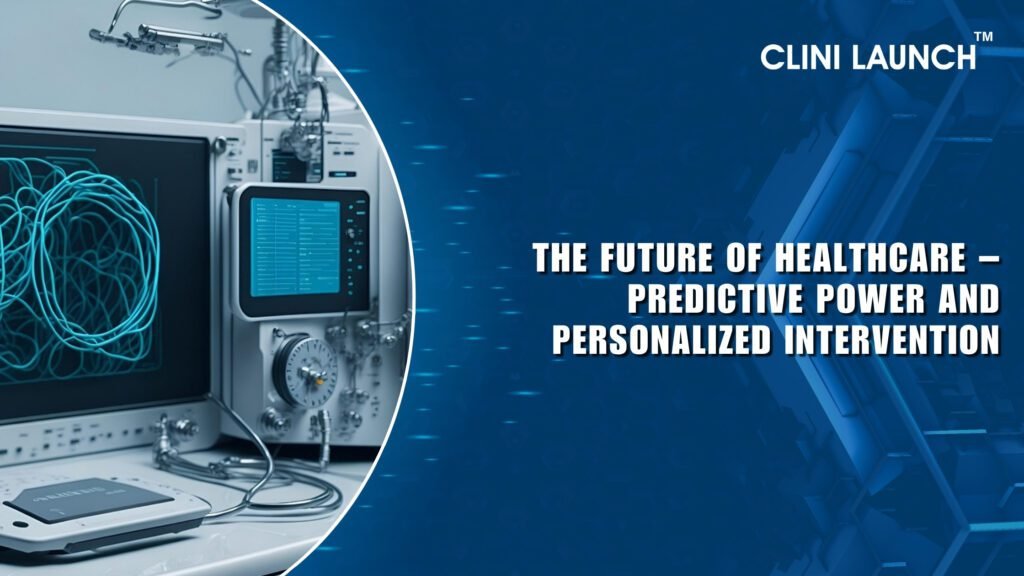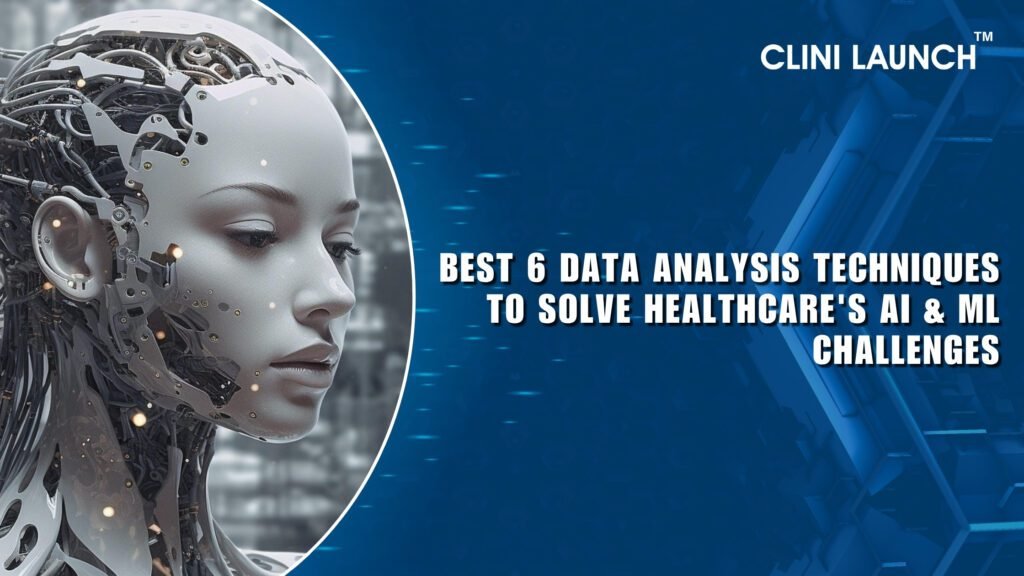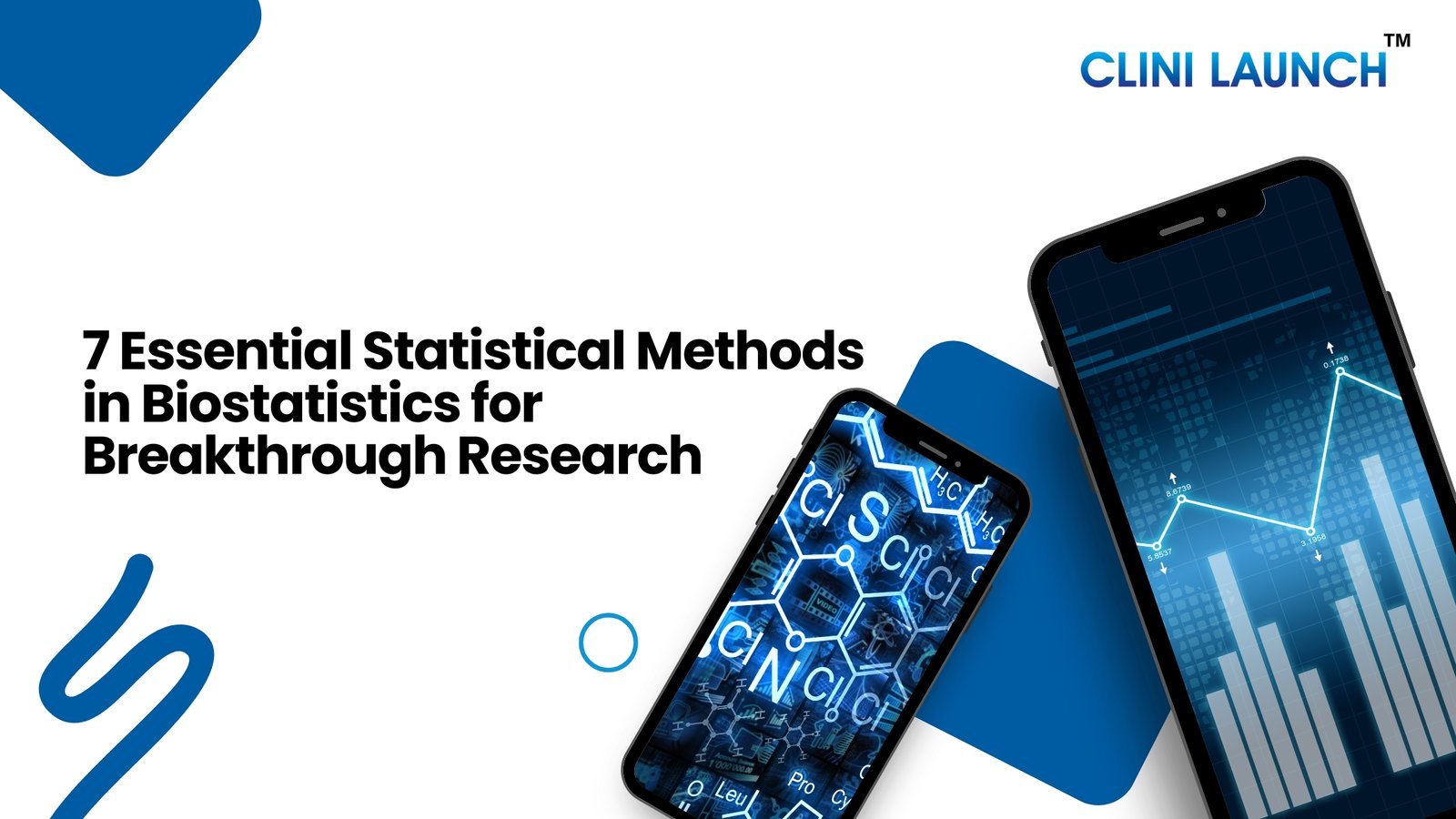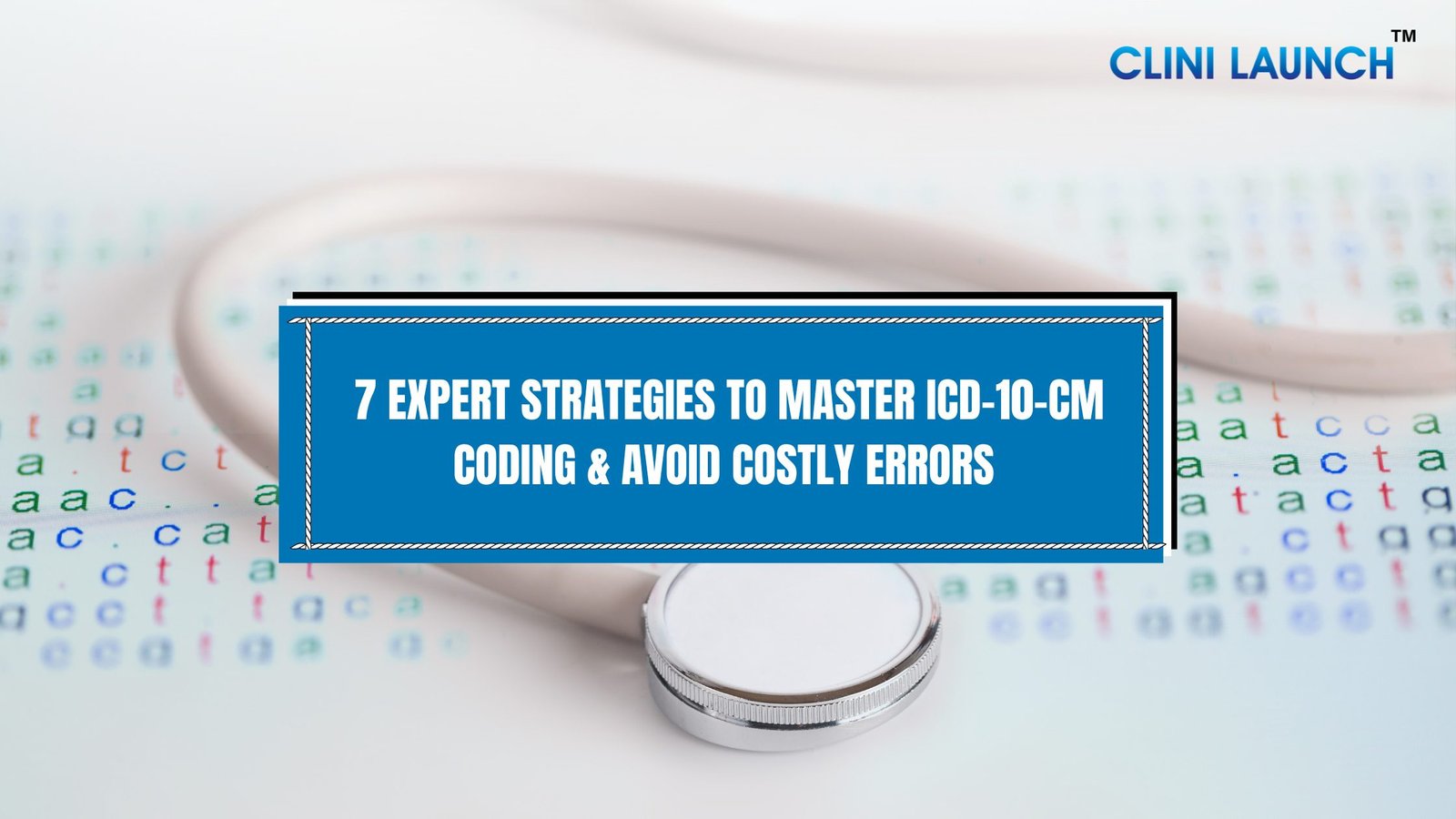The healthcare landscape is undergoing a revolutionary transformation, driven by the synergistic power of vast datasets and the intelligence of Artificial Intelligence (AI) and Machine Learning (ML). From the overflow of electronic health records (EHRs) and sophisticated medical imaging to intricate genomic sequences and real-time wearable sensor data, the total volume of information presents both immense opportunities and significant challenges.
At the core of transforming this raw data into actionable knowledge lies the mastery of advanced data analysis techniques. These techniques are the fundamental instruments that empower healthcare professionals, researchers, and data scientists to unearth hidden patterns, derive critical insights, and ultimately elevate patient care and drive medical innovation.
This comprehensive guide will delve into the pivotal data analysis techniques that are indispensable for the effective application of AI and ML in healthcare, exploring the diverse data analytics tools and techniques that facilitate this process, and emphasizing the crucial role of robust statistical analysis methods.
Enroll Now: AI and ML in Healthcare
Understanding Healthcare Data in the AI/ML
The unique characteristics of healthcare data demand a specialized approach to analysis. Unlike data in many other sectors, medical information is often heterogeneous, longitudinal, sensitive, and prone to noise.
Diverse Modalities of Healthcare Data
Healthcare data manifests in various forms, each requiring tailored data analysis techniques:
- Structured Data: This includes patient demographics, diagnoses (e.g., ICD codes), lab results, medication lists, and vital signs, typically found in EHRs.
- Unstructured Data: A vast reservoir of insights resides in clinical notes, radiology reports, discharge summaries, and pathology reports. These require advanced techniques like Natural Language Processing (NLP).
- Medical Imaging: X-rays, MRIs, CT scans, and ultrasound images provide critical visual information. Analyzing these demands for specialized computer vision and deep learning techniques.
- Genomic Data: DNA and RNA sequencing data offer insights into individual predispositions and responses to treatments, requiring bioinformatics and advanced statistical methods.
- Wearable Sensor Data: Continuous streams of physiological data from smartwatches and other devices provide real-time health monitoring capabilities.
- Clinical Trial Data: Data collected during drug development and clinical studies are crucial for evidence-based medicine and often involves complex statistical designs.
Data Quality and Preprocessing
The integrity of any analysis depends on the quality of the input data. Healthcare data often suffers from issues such as:
- Missing Values: Incomplete records are common due to various reasons. Techniques like mean imputation, median imputation, or more advanced methods like K-Nearest Neighbors (KNN) imputation are critical.
- Outliers: Anomalous data points can significantly skew results. Identifying and appropriately handling outliers (e.g.,Winsorization, removal) is essential.
- Inconsistencies and Errors: Inconsistencies in data entry or coding require meticulous cleaning and validation.
- Data Transformation: Normalization, standardization, and binarization are often necessary to prepare data for specific algorithms, as highlighted in the provided research, where quantitative attributes were transformed into binary ones for association rule mining.
Core Methodologies – Data Analysis Techniques for Healthcare Data

At the heart of AI and ML applications in healthcare are robust data analysis techniques, often rooted in statistical principles and extended by machine learning paradigms.
Exploratory Data Analysis (EDA)
EDA is the crucial first step in any data analysis pipeline. It involves summarizing the main characteristics of a dataset, often with visual methods. EDA helps:
- Understand Data Distributions: Histograms, density plots, and Q-Q plots reveal the shape and spread of data.
- Identify Relationships: Scatter plots and correlation matrices can show initial associations between variables, guiding feature selection.
- Detect Anomalies and Outliers: Box plots and violin plots are effective for visualizing data ranges and potential outliers.
- Uncover Patterns and Biases: Early insights from EDA can reveal inherent biases in the data, which is vital for ethical AI development in healthcare.
Statistical Analysis Methods
Statistical analysis methods provide a quantitative framework for understanding and interpreting healthcare data. They allow us to move beyond mere observation to drawing valid conclusions.
- Descriptive Statistics: These methods provide concise summaries of data. Measures of central tendency (mean, median, mode) describe typical values, while measures of dispersion (variance, standard deviation, interquartile range) describe the spread or variability of data points. For instance, calculating the average glucose level or the standard deviation of BMI across a patient cohort can give immediate insights.
- Inferential Statistics: These methods allow us to make predictions or inferences about a population based on a sample of data.
- Hypothesis Testing: This involves formulating a null hypothesis (e.g., “there is no difference between two treatments”) and an alternative hypothesis, then using statistical tests (e.g., t-tests for comparing means, ANOVA for comparing multiple means, chi-square tests for categorical associations) to determine the probability of observing the data if the null hypothesis were true. This is critical for clinical trials and comparative effectiveness of research.
- Regression Analysis: This technique models the relationship between a dependent variable and one or more independent variables.
- Linear Regression: Predicts a continuous outcome (e.g., predicting blood pressure based on age and BMI).
- Logistic Regression: Predicts the probability of a binary outcome (e.g., predicting the likelihood of a patient having a stroke based on risk factors, as discussed in the reference paper where ML is used to predict the probability of suffering from a specific disease).
- Cox Proportional Hazards Regression: Used in survival analysis to model the relationship between patient survival time and other variables, invaluable for prognosis.
- Survival Analysis: Specifically designed for time-to-event data (e.g., time until disease recurrence or death), methods like Kaplan-Meier curves and Cox regression are vital for understanding disease progression and treatment efficacy over time.
- Non-parametric Statistical Methods for Data Analysis: When data do not meet the assumptions of parametric tests (e.g., normal distribution), non-parametric alternatives are employed. Examples include the Mann-Whitney U test (for comparing two independent groups) or the Wilcoxon signed-rank test (for paired data), ensuring valid statistical inferences even with non-normal data.
Machine Learning-Driven Data Analysis Techniques
Machine learning has introduced a new era of data analysis techniques in healthcare, enabling the discovery of intricate patterns and the creation of highly accurate predictive models that traditional statistical methods might lack. The provided research highlights that machine learning is a key technology playing a special role in healthcare extension, especially for categorization and creating advanced predictive models determining the probability of a patient suffering from a specific disease.
Supervised Learning: Labeled Data for Prediction
Supervised learning algorithms learn from datasets where the desired output (label) is known, allowing them to make predictions on new, unseen data.
- Classification Algorithms: These are widely used for diagnostic and risk prediction tasks.
- Support Vector Machines (SVMs): Effective for classifying patients into disease categories.
- Gradient Boosting Machines (GBMs): Ensemble methods known for their high accuracy in tasks like predicting disease onset, identifying high-risk individuals for specific conditions (like stroke, as studied in the reference), or classifying medical images. The reference also mentions using a Random Forest algorithm to identify levels of anxiety, depression, and stress.
- Neural Networks: More complex forms of machine learning, neural networks are explicitly mentioned in the reference for categorization applications, such as determining if a patient will develop a specific disease. They map mechanisms of expert inference and are particularly useful for creating advanced predictive models.
- Regression Algorithms: These predict continuous numerical outcomes. Beyond traditional linear regression, ML offers advanced methods like Ridge, Lasso, and Elastic Net regression, which are robust for handling high-dimensional data often found in genomics or patient sensor data.
The Discovery of Latent Data Structures
Unsupervised learning algorithms work with unlabeled data to discover inherent patterns and structures without prior knowledge of outcomes.
- Clustering: Techniques like K-Means, Hierarchical Clustering, and DBSCAN group similar data points together. In healthcare, this is invaluable for:
- Patient Phenotyping: Identifying distinct subgroups of patients who may respond differently to treatments or progress through a disease in unique ways.
- Disease Subtyping: Discovering new subtypes of diseases based on molecular or clinical profiles.
- Risk Group Identification: As suggested by the research hypothesis, machine learning methods can detect groups of people at risk of developing an analyzed disease, enabling prioritized and personalized preventive actions.
- Dimensionality Reduction: Techniques such as Principal Component Analysis (PCA), t-Distributed Stochastic Neighbor Embedding (t-SNE), and Uniform Manifold Approximation and Projection (UMAP) reduce the number of variables in a dataset while preserving essential information. This is crucial for:
- Visualization: Making high-dimensional genomic or clinical data interpretable.
- Feature Selection: Reducing noise and improving the performance of downstream machine learning models.
Deep Learning Architectures: Complex Healthcare Data
Deep learning, a subset of ML utilizing multi-layered neural networks, excels at learning complex representations directly from raw data, especially large and intricate datasets.
- Convolutional Neural Networks (CNNs): Revolutionized medical image analysis (e.g., detecting tumors in radiology scans, classifying retinal diseases, analyzing histopathology slides).
- Recurrent Neural Networks (RNNs) and Long Short-Term Memory (LSTM) Networks: Ideal for analyzing sequential data like EHRs (patient journeys over time), physiological signals (ECGs, EEGs), and continuous sensor data.
- Transformers: Emerging architectures that are highly effective for Natural Language Processing (NLP) tasks on clinical notes, enabling extraction of key information and context from unstructured text.
Advanced Data Analytics Tools and Techniques in Practice

The theoretical understanding of data analysis techniques must be complemented by practical proficiency in data analytics tools and techniques.
Data Preprocessing and Feature Engineering for Robust Models
Beyond basic cleaning, advanced preprocessing and feature engineering are crucial.
- Handling Missing Data: Strategies include advanced imputation methods (e.g., MICE, predictive imputation).
- Outlier Treatment: Robust statistical methods and machine learning-based anomaly detection (e.g., Isolation Forests) are employed.
- Feature Scaling and Transformation: Techniques like standardization and normalization ensure that not a single feature dominates the learning process due to its scale.
- Feature Engineering: Creating new, more informative features from existing raw data (e.g., calculating BMI from height and weight, deriving disease progression rates from longitudinal data) can significantly enhance model performance. The reference also indicates the importance of transforming quantitative attributes into binary ones for association rule generation.
Risk Identification and Tailored Interventions
The research provided extensively detailed association rules as a powerful data analysis technique for discovering interesting relationships between variables in large datasets. This is particularly relevant for identifying risk groups and informing personalized prevention.
- Concept: Association rules are similar to decision rules but without a predetermined outcome. They identify implications (e.g., “if X, then Y”) with a certain support and confidence.
- Metrics:
- Support: Indicates how frequently the items in the rule appear together in the dataset (e.g., 0.002 support means appearing in 0.2% of transactions).
- Confidence: Measures how often the consequent (Y) appears when the antecedent (X) is present.
- Lift: A crucial metric indicating how much more likely the antecedent is given the antecedent, compared to its baseline probability. A lift greater than 1 suggests a positive association, less than 1 suggests a negative association, and 1 indicates independence. The research highlights the use of lift to identify highly impactful rules for stroke prediction (lift > 3) and safe groups (lowest lift).
- Application in Healthcare: As shown in the reference, association rules can rapidly and automatically identify potentially valuable hypotheses related to a disease. This can streamline medical research by:
- Identifying Risk Groups: Discovering combinations of patient characteristics (antecedents) that are strongly associated with specific outcomes (consequents, like stroke). The example in the reference identifies rules with high lift (e.g., (Residence_type_Urban, heart_disease, glucose_metabolic_consequences, work_type_Private) -> (stroke)).
- Informing Personalized Prevention: By identifying risk groups, healthcare providers can prioritize and personalize preventive actions, leading to greater effectiveness. For instance, the analysis of smoking status in males versus females shows different risk profiles (males who smoke are more stroke-liable, females less so, compared to their respective averages), suggesting the need for tailored interventions. This aligns with the concept of “tailored interventions” discussed in the provided reference, aiming to overcome barriers to treatment adherence by identifying influencing factors.
- Interpretability: A significant advantage of association rules is their interpretability, addressing the “black box” nature of many AI models. As the authors suggest, this method delivers understandable knowledge that physicians can act upon, which is crucial in current medicine.
Natural Language Processing (NLP): Extracting Insights from Unstructured Clinical Data
NLP is a vital data analysis technique for unlocking the vast amount of information contained in unstructured clinical notes, research papers, and patient forums.
- Named Entity Recognition (NER): Identifying and extracting specific entities like patient names, diagnoses, medications, and procedures from free text.
- Sentiment Analysis: Assessing the emotional tone in patient feedback or clinical notes.
- Topic Modeling: Discovering themes and topics discussed across large collections of clinical documents.
- Clinical Question Answering Systems: Enabling clinicians to quickly retrieve relevant information from vast medical literature.
Time Series Analysis: Temporal Patterns in Health Data
Time series analysis is essential for understanding dynamic health processes.
- Applications: Patient monitoring, early detection of disease outbreaks, analysis of drug efficacy over time, and predicting disease progression.
- Methods: ARIMA models (Autoregressive Integrated Moving Average), Prophet (for forecasting time series data), and Hidden Markov Models (HMMs) for modeling sequences of states.
Causal Inference: Moving Beyond Correlation to Actionable Insights
While many data analysis techniques identify correlations, causal inference methods aim to determine cause-and-effect relationships. This is critical for evaluating interventions and making robust clinical recommendations from observational data. Techniques include propensity score matching, instrumental variables, and difference-in-differences.
Data Analytics Tools and Ecosystems for Healthcare Innovation
The practical application of these data analysis techniques relies on a robust ecosystem of data analytics tools and techniques.
- Programming Languages:
- Python: Dominates the AI/ML landscape with libraries like Pandas (for data manipulation), NumPy (for numerical operations), Scikit-learn (for traditional ML), TensorFlow, and PyTorch (for deep learning). Its versatility makes it a go-to for implementing a wide array of data analysis techniques. The reference specifically mentions sklearn.preprocessing.LabelBinarizer and the mlxtend library (which includes APRIORI for association rule mining), all parts of the Python ecosystem.
- R: Remains strong in statistical computing and visualization, with extensive packages for biostatistics, clinical trial analysis, and advanced graphical representations.
- Data Visualization Tools: Tools like Matplotlib, Seaborn (Python), and ggplot2 (R) are fundamental for creating informative and interpretable visualizations. Business Intelligence (BI) platforms such as Tableau and Power BI offer advanced interactive dashboards, enabling clinicians and administrators to explore complex healthcare data intuitively.
- Big Data Platforms: For the massive volumes of healthcare data, platforms like Apache Spark and Hadoop provide distributed computing capabilities, allowing for efficient processing and analysis of petabytes of information.
- Cloud-Based Data Analytics Platforms: Major cloud providers (AWS, Azure, Google Cloud) offer a comprehensive suite of services for data storage, processing, machine learning, model deployment, and analytics. These platforms provide scalability, flexibility, and robust security features crucial for sensitive healthcare data.
The Future of Healthcare – Predictive Power and Personalized Interventions

The ongoing advancements in data analysis techniques are paving the way for truly intelligent medicine. The ability to automatically identify risk groups and predict disease outcomes is a game-changer. As the reference indicates, “The development of artificial intelligence technologies contributes to the search for solutions that would be useful in the field of healthcare,” particularly in diagnostics and predicting the results of medical procedures.
The research’s focus on predicting the probability of developing a specific disease using machine learning methods and association rules underscores a critical paradigm shift:
- Automated Risk Prediction Algorithms: AI can create algorithms that automate the analysis of large patient datasets to predict the risk of developing certain types of diseases, mirroring the successful application of AI in financial and insurance sectors.
- Personalized Prevention: By identifying risk groups, healthcare can move from a reactive “one-size-fits-all” approach to proactive, personalized prevention. This means tailoring interventions and educational strategies to individuals based on their specific risk profiles, leading to greater effectiveness and improved patient outcomes. The reference’s finding that smoking females are less stroke-liable than an “average female” (lift = 0.89), contrary to males where smoking increases stroke liability (lift = 1.33), is a powerful example of how personalized insights from association rules can guide differentiated preventive strategies.
The interpretability of certain data analysis techniques, like association rules, is also paramount. While many advanced ML/DL models act as “black boxes,” providing accurate predictions without clear explanations, methods that deliver understandable knowledge are vital in medicine, where physicians need to comprehend the basis of a recommendation to make informed decisions and build trust with patients.
Final Thoughts
The journey into intelligent healthcare is intrinsically linked to our ability to master sophisticated data analysis techniques. By leveraging cutting-edge data analytics tools and techniques and applying robust statistical analysis methods, we can transform raw healthcare data into a powerful engine for discovery and improved patient care.
From enhancing diagnostic accuracy and predicting disease progression to personalizing preventive interventions and optimizing treatment strategies, the impact of effective data analysis is profound and far-reaching. As AI and ML continue to mature, the demand for professionals skilled in these analytical disciplines will only accelerate, defining the future of medical innovation.
Are you ready to harness the transformative power of data analysis for groundbreaking healthcare research and development?
Visit CliniLaunch Research today and explore our comprehensive courses designed to equip you with the knowledge and skills to thrive in life sciences, including in-depth training on methodologies.
References
Application of Machine Learning in medical data analysis illustrated with an example of association rules
https://www.sciencedirect.com/science/article/pii/S1877050921018238





